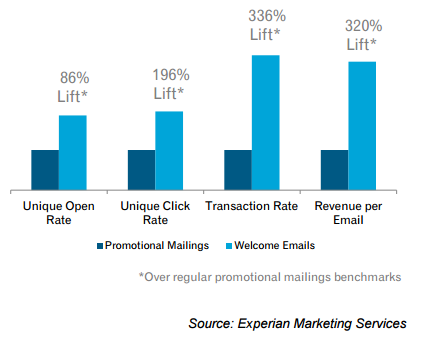In any product or service, the "end user" refers to the person who actually uses the product. While developers, designers, and business owners are involved in creating, managing and purchasing products, it’s the end user who interacts with it on a daily basis. The concept of the end user is central to understanding how to create products and marketing materials that are not only functional but also enjoyable and easy to use.

Why Understanding the End User Matters
When we talk about the "end user," we're referring to the real people who will be using your product in their everyday lives. These are the individuals who navigate your website, use your app, or engage with your digital platform. Their experience—whether positive or negative—can significantly impact the success of your product. A positive user experience (UX) encourages them to keep using your product, recommend it to others, and develop loyalty to your brand.
User experience encompasses every interaction a user has with your product or service. It's not just about aesthetics or functionality—it's about creating meaningful, intuitive, and enjoyable experiences that align with user expectations. It’s about understanding their needs, preferences, and behaviors and making every interaction they have with your product is as smooth, intuitive, and satisfying as possible.
Design with the User in Mind: Crafting the Foundation
1. Start with User Research
Before any design work begins, it’s essential to understand who your users are. User research provides invaluable insights into user needs, behaviors, and pain points. This understanding forms the foundation for a user-centered design approach.
- Methodologies: Conduct surveys, interviews, and usability tests to gather qualitative and quantitative data. Observe how users interact with similar products to identify common frustrations and preferences.
- Personas and Empathy Mapping: Create user personas and empathy maps that capture the goals, motivations, and challenges of your target audience. This helps keep the user front and center throughout the design process.
2. Simplify the Design
A cluttered interface can overwhelm users and lead to frustration. Simplicity in design allows users to navigate your product with ease, focusing on what matters most.
- Avoid Clutter: Adopt a minimalist approach, stripping away unnecessary elements to allow core features to shine. Check that each design element serves a clear purpose.
- Intuitive Navigation: Design navigation paths that are logical and require minimal effort. Use familiar icons, clear labels, and consistent layouts to guide users through their journey seamlessly.
3. Mobile Responsiveness: Multi-Device Usability
With mobile internet usage surpassing desktop, ensuring your product is responsive across devices is no longer optional—it’s a necessity.
- Responsive Design Frameworks: Implement responsive design frameworks that adapt your interface to different screen sizes and orientations. Test across a range of devices to guarantee consistency.
- Mobile-First Approach: Consider adopting a mobile-first design philosophy, where the mobile experience is prioritized during the design process. This way the most essential features are optimized for smaller screens.
Engage Users Throughout Their Journey
4. Personalization: Tailoring the Experience
Personalization is a powerful tool for enhancing UX by delivering content and features tailored to individual user preferences.
- Behavioral Data: Use data analytics to track user behavior and preferences. Leverage this data to personalize content, product recommendations, and user interfaces.
- Dynamic Content: Implement dynamic content that changes based on user interactions or preferences, creating a more relevant and engaging experience.
5. Interactive and Feedback-Driven Design
Engagement doesn’t end once a user navigates your product. Continuous interaction and feedback are vital for keeping users invested.
- Interactive Elements: Incorporate interactive features like quizzes, surveys, and chatbots to engage users actively. These elements can provide immediate value and enhance the user’s sense of control and involvement.
- Real-Time Feedback: Design systems that provide real-time feedback for user actions. This could be as simple as visual confirmations for completed tasks or more complex systems that offer progress tracking or achievement badges.
Maintain and Improve: The Continuous UX Journey
6. Continuous Testing and Iteration
User experience is not static; it requires ongoing refinement to remain effective and relevant. Continuous testing and iteration are essential for sustaining a high-quality user experience.
- A/B Testing: Regularly conduct A/B testing to compare different design variations and determine what works best for your audience. Use these insights to make informed design improvements.
- User Feedback Loops: Establish feedback loops where users can share their thoughts on the product. Regularly review and act on this feedback to address issues and identify opportunities for enhancement.
7. Data-Driven Insights
Data is the lifeblood of modern UX strategy. Using data-driven insights helps you make informed decisions that align with user needs and business goals.
- Analytics Tools: Utilize UX analytics tools to monitor user behavior, track key metrics like bounce rates, and identify patterns that may indicate areas for improvement.
- User Behavior Analysis: Analyze user behavior to understand how users interact with your product and where they may encounter difficulties. This analysis can inform future UX design and feature development.
Shanon es una diseñadora multidisciplinaria especializada en la creación de diversos activos digitales, como campañas digitales, videos o ebooks. Con experiencia en marketing digital y inbound marketing, Shanon destaca en el desarrollo de landing pages y webs para clientes usando HubSpot.
Front-End Developer & Graphic Designer. Shanon is a multidisciplinary designer specialized in creating diverse digital assets, including digital ads, videos, ebooks, and more. With a background in digital and inbound marketing, Shanon excels in developing impactful landing and web pages for clients using HubSpot.



.jpg)


Leave your comment and join the conversation